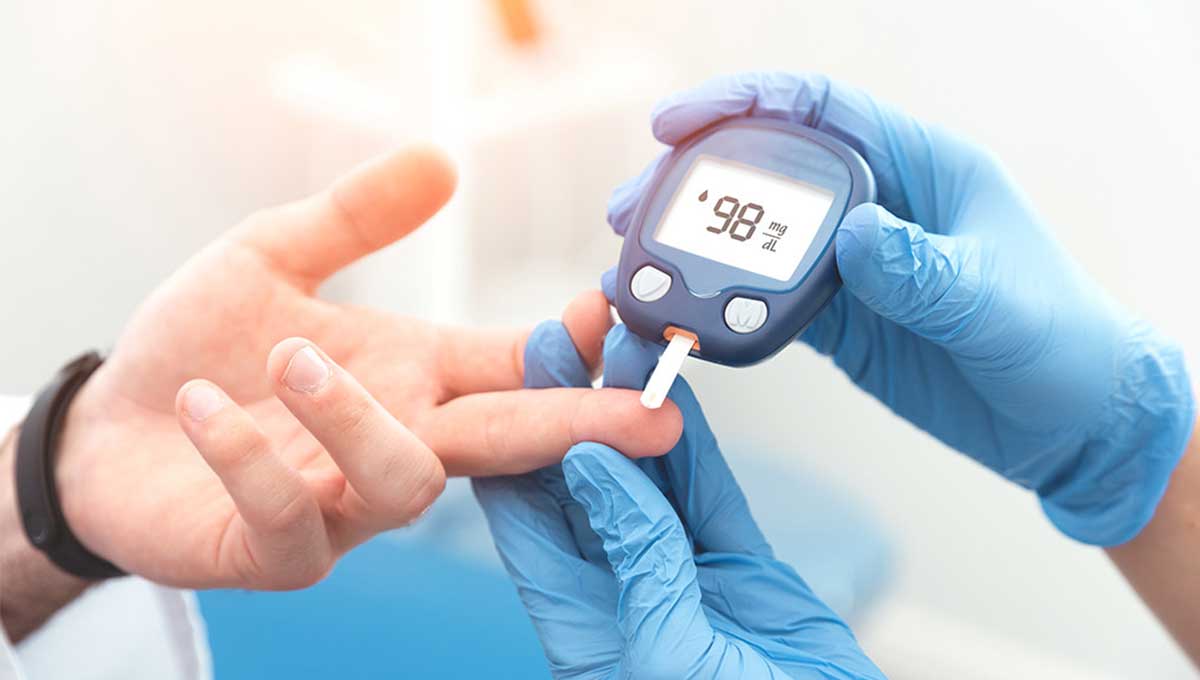The constructs of our bodies are something that continues to strike awe into those that study it. Everything we do, from running, jumping, breathing, and talking are constant reminders of just how special we are.
However, most of us only begin to appreciate our bodies when something goes wrong. Even catching a common cold is enough for us to think back to all the days we took something basic as breathing for granted.
Among the different ailments and issues our health may face are physiological disorders.
This term covers several conditions and can affect us in different ways. We will look at some of the most common, focusing on 3 specific areas. These are: what causes them, what are the symptoms, and how can they affect the brain?
But before we do, let us get a clearer understanding of what physiological disorders are.
What Are Physiological Disorders?
Our bodies are intricate machines working every day to keep us in good health. A key element to this is the function of our organs. When these organs fail to work correctly that is what we call a physiological disorder.
This however does not always lead to a drastic change in lifestyles.
Many people have been able to manage the presence of physiological disorders in their lives. Sometimes this is achieved through a change in personal habits or medication. However, others are more serious and can drastically affect our quality of life or shorten our lifespan.
Several reasons could lead to this happening. For example, our lifestyle, genetics, exposure to harmful agents at our workplace, or even just the ageing process to name a few. But in all cases, there will be an illness that is the root cause of this decline in health.
Diabetes
Diabetes is one of the most well-known physiological disorders. In fact, an estimated 11 million Canadians living with the condition today.
The long-term effects can run throughout the whole body, however, many may not realize that diabetes can affect the brain too. Diabetes patients have an increase in the chance of having a stroke and can suffer nerve damage, leading to vascular cognitive impairment or vascular dementia.
There are also other potentially life-changing complications, such as blindness or non-healing wounds that can result in amputations. Such consequences are common ways that those suffering and also their families are affected.
Although there are two types of diabetes, the symptoms are quite similar. These include such things as excessive thirst and hunger, tiredness, frequent urination, and sudden weight loss.
While there is no known cure for type 1 diabetes, it can be managed with the correct medication. The most common form is through the use of insulin injections to raise blood sugar levels. Type 2 diabetes however is usually linked to lifestyle choices that patients can manage and even reverse over time. The most effective way to achieve this is through increased physical activity and improved nutrition.
Alzheimer's Disease
One of the most challenging diseases for loved ones is Alzheimer's disease. This is a pathological condition that primarily affects the brain. Deformed proteins called plaques and neurofibrillary tangles inhibit communication between nerves, as well as receiving the nutrition that they need.
This results in those with Alzheimer's disease suffering from both short and long-term memory loss, mood swings, paranoia, and hallucinations. Day-to-day tasks can be a challenge due to not being able to remember how they are done, greatly limiting their independence.
There is no defined cause for the development of this condition however the biggest factors seem to be age, genetics, and family history.
Unfortunately, there is no known cure. There is however much that can be done to try and delay the progression of Alzheimer's. Some medication aims to increase the amount of acetylcholine in the bloodstream, a neurotransmitter that helps memory.
In addition, antidepressants and other medication may also be prescribed to help contain the symptoms.
Parkinson’s Disease
Parkinson's disease is perhaps one of the most misunderstood physiological disorders. Although the main symptoms are well known, each person has a different experience. In fact, there is a saying that goes "If you've met one person with Parkinson's, you've met one person with Parkinson's."
This progressive brain disease seems to be linked to the loss of the nerve cells that produce dopamine, the neurotransmitter linked to movement. When these nerve cells die Parkinson's symptoms begin to appear. The reasons why this happens are still unclear, but the most well-founded areas of suspicion are genetics and environmental factors.
Age seems to be a factor in the development of Parkinson's' disease, with most cases appearing after the age of 60. That said, people have shown early symptoms in their 40s as well.
Someone with Parkinson's disease can suffer a range of symptoms. The most common are resting tremors, slowness of movement, and stiffness. But given the neurological nature of the condition many parts of the body can be affected leading to conditions like insomnia, constipation, loss of balance, and depression.
In more advanced cases, communication and caring for their day-to-day needs can be a challenge for the family. But as with all the physiological disorders on this list, there is much in the way of support through charitable organizations such as Parkinson's Canada.
Rheumatoid Arthritis
Rheumatoid arthritis affects approximately 1 in 100 Canadians today.
It is an autoimmune disease meaning that a confused immune system begins to view our own bodies as a threat and begins to attack it. In this case, the main areas affected are the joints.
The main symptoms are pain, swelling and stiffness in the joints throughout our bodies, but often starting in the hands and feet. Scientists have linked this rheumatic condition to tiredness, fatigue and brain fog. These symptoms can cause much disruption to the lives of those living with rheumatoid arthritis and concern from their loved ones.
Great improvements are often seen when caught early. So if you note any of these symptoms, including feeling stiff every morning for at least 30 minutes you should seek medical attention.
After a clinical diagnosis, treatment can start. This includes physical therapy, painkillers and other medication that reduce inflammation. Steroid injections to reduce inflammation are also common in the initial stages, as certain mediation such as disease-modifying anti-rheumatic drugs (DMARD's), can take some time to start working.
Asthma
This chronic respiratory condition is perhaps the most common on this list, with Canada.org reporting more than 3 million Canadians living with it today.
The reasons for developing asthma are not clear, with genetic and environmental conditions, including links to childhood poverty, are understood to possibly be factors.
Symptoms include feeling a tightness in the chest, trouble breathing, and frequent coughing.
This is because of the inflammation happening in the smaller airways in the lungs namely the bronchi and bronchioles. When triggered, the lining in these airways swells and produces too much mucus. This is compounded by the contraction of the muscles surrounding the airways leading to a reduced area for the air to pass through.
The best way to counter the onset of an asthma attack is with the use of an inhaler. When used, they manage to get to the source of the problem as the medication can cause the constricted muscles to relax allowing more air to flow into the lungs. Preventative inhalers reduce the sensitivity and inflammation of the airways to common triggers and are effective in reducing long-term damage to the lung tissue.
So what are some of the most common triggers for asthma sufferers?
They can include common things such as fragrances, tobacco, dust, exercise, mental stress, being in the cold for too long and catching a common cold. Given the wide range of triggers, reducing exposure to them is often the best way to reduce the chances of an asthma attack.
Coronary Heart Disease
The heart, just like any other muscle in our bodies needs a constant supply of oxygen and nutrition. Our blood, the most important tissue in our bodies does this every day, with startling efficiency.
However the most damaging to this process among the different types of physiological disorders is coronary heart disease. This develops when the routes for the blood to our heart, the coronary arteries become blocked. This is primarily due to a build-up of cholesterol over time but can also be due to thrombosis and clotting.
When we have too much of the wrong types of cholesterol in our blood, it can start to develop plaque in our arteries. In addition, it can also harden the areas around the plaque, not allowing for dilation.
What does that mean for the sufferer? Well, they may note chest pain and fatigue when exerting themselves physically in what should be non-strenuous activities. This could also happen suddenly and without warning.
Recent studies have also shown a surprising link between long-term degenerative cognitive function and the heart. For a long time, links between heart health and brain function were believed to be connected but these findings only further confirm this fact.
In the worst case, those with coronary heart disease can suffer from a heart attack which can be fatal.
Often the best way to counter coronary heart disease is by changing your lifestyle. Smoking, bad nutrition and inactivity are all contributing factors to its development. Therefore making positive changes to your lifestyle often bring about the best results.
Cancer
The big C has, unfortunately, become one of the most common physiological disorders today. The types and effects range greatly but the root cause remains the same.
Our wonderful bodies all started with the existence of one cell. Some cells reach maturity, but others keep on reproducing throughout our lives. However, a cell mutation from its DNA can develop anywhere in the body.
In most cases, they are destroyed or shut down by our immune system but at times they reproduce into more and more bad cells, leading to cancer.
Treatment depends much on where the cancer is and how far advanced it has become. If it is in one place and growing at a slow rate then all that may be needed is surgery and ongoing observation. If it is fast-growing and spreading throughout the body then radiotherapy and chemotherapy may be the recommended route alongside surgery.
Both radiotherapy and chemotherapy can lead to many side effects, as none of these methods can directly damage only the cancerous cells. Hair loss, nausea, fatigue and weight loss are among the most common.
When it comes to the brain any type of cancer can spread to the area, however, some are more likely to than others. These are breast, colon, kidney and melanoma. When present, it can lead to symptoms like confusion, seizures, headaches, personality changes, and memory loss.
Given the need for regular treatment, life can shift in a heartbeat for the sufferer and their loved ones. Appointments to attend for treatment as well as the emotional strain are common challenges for many dealing with cancer.
Understanding Physiological Disorders and Their Impact
Being hit with any of the conditions mentioned in this post can be a real challenge. But a commitment to following the advice of healthcare professionals and a good support network has proven to be priceless aids to many dealing with physiological disorders.
In times like this having the safety net of insurance in its various forms can give peace of mind. We at Insurdinary pride ourselves on helping you achieve the best rates possible, so see what we can do for you, get a quote now.








